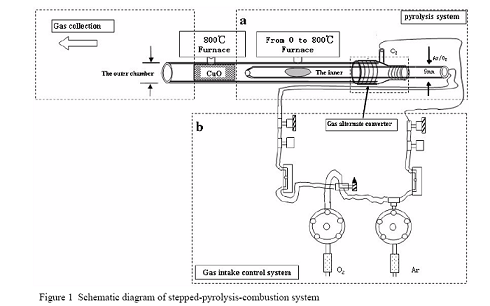Radiocarbon dating of loess-paleosoil is notoriously problematic due to its heterogeneous mix of multiple organic fractions, each of which may have a different radiocarbon age. Thus, the results yielded by 14C dating of total SOM are often inconsistent with the stratigraphic succession: too young, too old, or even reversed. The onerous chemical extractions for TOM (total soil organic matter) fractions do not always produce satisfactory 14C dates. Thus, IEECAS aims at confirming the very fraction that can be applied to decide the real age of loess-paleosoil.
A temperature-stepped-pyrolysis approach is introduced in which pyrolysis-combustion is carried out to partition SOM into pyrolytic volatile (Py-V) and pyrolytic residue (Py-R) fractions at different pyrolytic temperatures. The known age palesoil samples are used to get the appropriate pyrolytic temperature condition at 200℃, 400℃, 600℃, and 800℃. The preliminary results show that the reliable fraction can be obtained from the Py-V at 800℃.
However, affected by penetration and subsequent decomposition of rootlets and/or translocation/percolation of soluble organic substances, most of the young carbon in the Py-V fractions is extracted before 400℃, while the oldest carbon in the Py-R fraction is extracted at 800℃, where the old parent and detrital materials may contain. It is also revealed that fraction age is proportional to temperature, while the ages of Py-V fractions are younger than those of the Py-R fractions. This application of temperature-stepped-pyrolysis approach will provide us with a new way to improve the accuracy of 14C dating of loess-paleosoil.

This work has been published on the well known journal,Radiocarbon. (Peng Cheng, Weijian Zhou, Hong Wang, Xuefeng Lu, Hua Du. 14C Dating of Soil Organic Carbon (SOC) In Loess-Paleosol Using Sequential Pyrolysis and Accelerator Mass Spectrometry (AMS), Radiocarbon, Vol 55, No 3–4 (2013), in press.)
 © 2015 Institute of Earth Environment,CAS
© 2015 Institute of Earth Environment,CAS 
 Location :
Location :